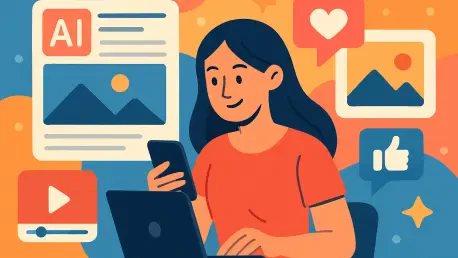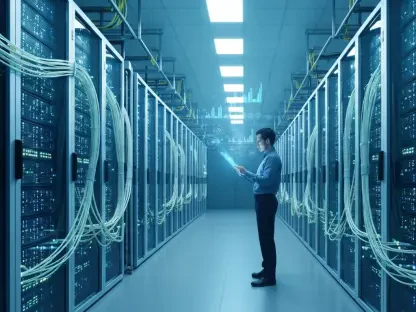In an era where artificial intelligence has woven itself into nearly every facet of digital life, a peculiar discomfort has emerged around the content it produces, leaving many with an unshakable sense of unease that transcends generations and industries. From social media posts and digital artwork to polished marketing campaigns, AI-generated material often strikes a discordant note, even when it appears flawless on the surface. This reaction isn’t merely a passing annoyance but a profound response, pointing to deeper questions about authenticity, creativity, and the essence of human expression. Dubbed by some as the “AI ick,” this visceral aversion reveals a tension between technological advancement and the intrinsic value placed on human effort. As AI tools become more ubiquitous, understanding why their output feels so hollow or off-putting is crucial to navigating their role in society. This exploration delves into the emotional, cultural, and philosophical roots of this discomfort, shedding light on why machine-made content often fails to resonate and what that means for the future of creativity.
The Emotional Disconnect with Machine-Made Creations
The immediate reaction to AI-generated content frequently manifests as a gut-level discomfort, a feeling that something fundamental is missing despite technical proficiency. Many describe a sense of irritation or even revulsion when they encounter a piece of writing, art, or video and later discover it was crafted by a machine. This emotional response stems from an expectation of human connection—a desire to engage with the thoughts, struggles, or passions of another person. When that connection is absent, the content feels like a facade, lacking the warmth or depth that characterizes human work. Social media users, for instance, often report an initial intrigue with a post or image, only to feel betrayed or unsettled upon realizing it’s the product of an algorithm. This shift from curiosity to distaste highlights how much value is placed on authentic human expression, even in fleeting digital interactions.
Further exploring this emotional disconnect, the sting of misattribution adds another layer of complexity to the issue. Imagine a writer who has poured heart and soul into a piece, only to have readers assume it was churned out by AI due to its polished structure or stylistic quirks. Such experiences underscore a broader societal fear of losing the personal touch that defines creative output. The visceral reaction isn’t just about the content itself but about what it represents—a potential erosion of the human element in art and communication. This discomfort is not confined to creators; consumers across various platforms express a similar unease, often likening AI content to an imitation that falls short of true resonance. As these reactions pile up, they form a collective sentiment that machine-made work, no matter how sophisticated, struggles to evoke the same emotional pull as human endeavors.
The Soulless Nature of Algorithmic Output
At the core of the unease surrounding AI-generated content lies a perception of soullessness, a lack of the intangible qualities that make human creations meaningful. Often described as mere “stochastic parrots,” large language models and other AI systems replicate patterns from vast datasets without genuine understanding or emotional investment. The result is content that can mimic the form of human expression—be it a poem, a painting, or a promotional blurb—but lacks the underlying intent or personal struggle that gives such work its depth. This hollowness becomes particularly evident when contrasted with human achievements that, even when aided by technology, still carry the imprint of individual choice and creativity. The absence of a personal narrative or lived experience in AI output renders it sterile, more akin to a mechanical product than a piece of art.
This perception of emptiness extends beyond mere aesthetics to the very process of creation, where human effort is often celebrated as much as the final result. Consider iconic works that blend technology with human ingenuity, such as the groundbreaking visual effects in classic films. These accomplishments, though reliant on digital tools, reflect countless decisions, revisions, and imaginative leaps by their creators. AI-generated content, by contrast, often feels like a shortcut, a compilation of pre-existing ideas without the spark of originality or the weight of personal investment. This distinction fuels the sense that machine-made output is fundamentally different, lacking the soul that comes from grappling with challenges or pouring one’s essence into a project. As a result, even the most polished AI creations can leave audiences cold, unable to bridge the gap between technical precision and emotional impact.
Cultural Distrust and Societal Pushback
Culturally, AI-generated content has sparked a wave of suspicion and derision, reflecting a deep-seated unease about technology’s encroachment into human domains. Across social platforms, memes and analogies paint AI creations as deceptive entities, akin to mythical tricksters whose mimicry hides unsettling flaws. Such comparisons capture a broader distrust, a feeling that machine-made content masquerades as something it’s not, lacking the genuine human essence that defines true art or communication. This cultural skepticism is amplified by social media trends where users playfully or cynically question the origins of content, revealing a heightened awareness of AI’s pervasive influence. The collective reaction isn’t just about individual pieces but about a growing wariness of technology reshaping interactions in ways that feel unnatural.
Beyond online discourse, this pushback is evident in industries like marketing, where AI-generated campaigns often face significant consumer backlash. Unlike human-crafted advertisements that have left lasting cultural imprints, such as memorable slogans or emotionally charged visuals, AI-driven content frequently falls flat, perceived as repetitive or awkwardly out of touch. Audiences seem to crave the originality and emotional resonance that come from human insight—qualities that algorithms struggle to replicate. This societal rejection signals a demand for authenticity, a push against the tide of machine-made material that feels more like mass-produced clutter than meaningful expression. As cultural narratives around AI continue to evolve, they reflect a persistent tension between embracing innovation and preserving the human touch that binds communities through shared creative experiences.
Philosophical Fears of Losing Human Uniqueness
Beneath the surface irritation with AI-generated content lies a profound philosophical concern about the nature of creativity and human identity. For centuries, the act of creation has been viewed as a distinctly human trait, a reflection of emotions, dreams, and personal struggles that machines cannot replicate. The rise of AI challenges this notion, presenting an existential threat to the belief that artistry and imagination are uniquely human domains. Research consistently shows that even when AI-produced work is indistinguishable from human efforts, it is often devalued, suggesting an innate need to protect the idea of human exceptionalism. This fear isn’t merely about aesthetics but about safeguarding a core aspect of what defines humanity in the face of encroaching technology.
This philosophical tension drives significant opposition from creators and industries that champion human authenticity over algorithmic efficiency. Leaders in creative fields, such as those in storytelling and visual arts, argue that machines lack the capacity to feel or dream, rendering their output fundamentally incapable of true artistry. Such stances reflect a broader anxiety that AI could diminish the value of human effort, reducing creative pursuits to mere data processing. The concern extends to how society perceives and prioritizes human-labeled work, often rating it higher in creativity and impact regardless of its actual origin. This deep-rooted fear of losing a defining trait fuels much of the unease surrounding AI content, positioning it as not just a technical challenge but a threat to the very essence of human identity and cultural heritage.
Practical Challenges in a Machine-Driven Landscape
On a practical level, the integration of AI-generated content into everyday contexts reveals a host of complications that amplify societal discomfort. Tools designed to detect machine-made work, particularly in academic settings, often prove unreliable, misidentifying even historical texts as AI-produced. Such inaccuracies carry serious ethical implications, with false positives risking damage to reputations and trust in educational systems. The flaws in these detection mechanisms highlight a broader struggle to balance technological oversight with fairness, as they sometimes disproportionately flag certain demographics or writing styles. This unreliability not only undermines confidence in AI tools but also fuels skepticism about their broader application in sensitive areas.
Adding to these practical hurdles is the contradictory dynamic surrounding AI use in professional and academic spheres. Despite widespread discouragement of relying on AI for tasks like writing or research, many students and professionals feel compelled to use such tools to remain competitive in demanding environments. This paradox reflects a societal clash between the push for efficiency and the enduring value placed on authentic human effort. The pressure to adopt AI, even when it’s frowned upon, exposes deeper systemic issues about how success is measured and prioritized in modern job markets. As these tensions play out, they contribute to the overall unease with AI content, underscoring the messy reality of integrating advanced technology into spaces traditionally defined by human skill and integrity.
Glimpsing Hope Amid the Unease
Despite the pervasive criticism of AI-generated content, a subtle thread of optimism emerges in discussions about its long-term impact on creativity. Some studies suggest that the sheer volume of machine-made material flooding digital spaces could, paradoxically, heighten appreciation for human artistry. When placed side by side, the contrast between the mechanical precision of AI output and the nuanced, effort-driven nature of human work often makes the latter stand out as more valuable and impactful. This potential shift in perception offers a glimmer of hope that society might renew its focus on authenticity, celebrating the personal investment and emotional depth that only human creators can provide.
However, this potential upside remains shrouded in uncertainty, as the allure of quick, cost-effective AI solutions continues to tempt industries and individuals alike. The question persists whether this renewed appreciation for human effort will translate into tangible support for creators or if the convenience of machine-generated content will overshadow such sentiments. As the landscape evolves, the challenge lies in fostering environments that prioritize and protect human creativity without stifling technological progress. Reflecting on past reactions to AI integration, it’s clear that while unease dominated initial responses, moments of comparison often sparked meaningful conversations about what truly matters in art and expression. Navigating this balance becomes a critical step in shaping a future where technology complements rather than competes with the human spirit.









